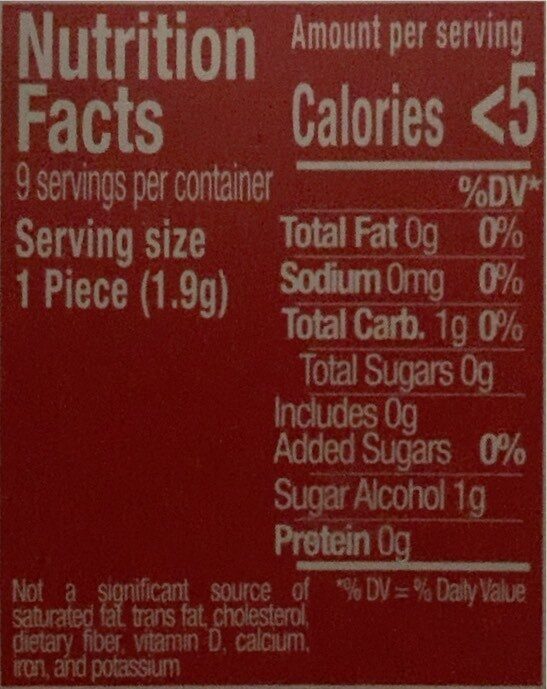Trident Splash X Strawberry & Lime - 0.6 oz (17.1 g)
This product page is not complete. You can help to complete it by editing it and adding more data from the photos we have, or by taking more photos using the app for Android or iPhone/iPad. Thank you!
×
Barcode: 0012546671231 (EAN / EAN-13) 012546671231 (UPC / UPC-A)
Common name: sugar free center filled gum.
Quantity: 0.6 oz (17.1 g)
Packaging: Plastic, Paper, Blister, Wrapper
Brands: Trident
Brand owner: Mondelez Int. US (0074819091009)
Categories: Snacks, Sweet snacks, Confectioneries, Chewing gum, Sugar-free chewing gum
Labels, certifications, awards: Low or no sugar, No sugar
Origin of ingredients: Mexico
Manufacturing or processing places: Puebla, México
Traceability code: 040503090001
Link to the product page on the official site of the producer: https://www.mondelezinternational.com/
Countries where sold: Bolivia, Colombia, Costa Rica, Dominican Republic, El Salvador, Guatemala, Honduras, Mexico, Nicaragua, Panama, Peru, United States
Matching with your preferences
Health
Ingredients
Food processing
Additives
Ingredients analysis
Environment
Packaging
Transportation
Report a problem
Data sources
Product added on by org-database-usda
Last edit of product page on by 5m4u9.
Product page also edited by ecoscore-impact-estimator, kiliweb, teolemon, yuka.sY2b0xO6T85zoF3NwEKvlk8XffzSkzbeCwzSvm2h9PSTEsbORPB827j1Oqs.




